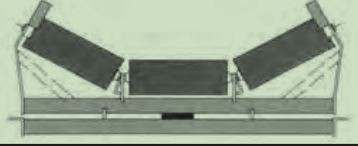 Afrikaans
Afrikaans  Albanian
Albanian  Amharic
Amharic  Arabic
Arabic  Armenian
Armenian  Azerbaijani
Azerbaijani  Basque
Basque  Belarusian
Belarusian  Bengali
Bengali  Bosnian
Bosnian  Bulgarian
Bulgarian  Catalan
Catalan  Cebuano
Cebuano  Corsican
Corsican  Croatian
Croatian  Czech
Czech  Danish
Danish  Dutch
Dutch  English
English  Esperanto
Esperanto  Estonian
Estonian  Finnish
Finnish  French
French  Frisian
Frisian  Galician
Galician  Georgian
Georgian  German
German  Greek
Greek  Gujarati
Gujarati  Haitian Creole
Haitian Creole  hausa
hausa  hawaiian
hawaiian  Hebrew
Hebrew  Hindi
Hindi  Miao
Miao  Hungarian
Hungarian  Icelandic
Icelandic  igbo
igbo  Indonesian
Indonesian  irish
irish  Italian
Italian  Japanese
Japanese  Javanese
Javanese  Kannada
Kannada  kazakh
kazakh  Khmer
Khmer  Rwandese
Rwandese  Korean
Korean  Kurdish
Kurdish  Kyrgyz
Kyrgyz  Lao
Lao  Latin
Latin  Latvian
Latvian  Lithuanian
Lithuanian  Luxembourgish
Luxembourgish  Macedonian
Macedonian  Malgashi
Malgashi  Malay
Malay  Malayalam
Malayalam  Maltese
Maltese  Maori
Maori  Marathi
Marathi  Mongolian
Mongolian  Myanmar
Myanmar  Nepali
Nepali  Norwegian
Norwegian  Norwegian
Norwegian  Occitan
Occitan  Pashto
Pashto  Persian
Persian  Polish
Polish  Portuguese
Portuguese  Punjabi
Punjabi  Romanian
Romanian  Russian
Russian  Samoan
Samoan  Scottish Gaelic
Scottish Gaelic  Serbian
Serbian  Sesotho
Sesotho  Shona
Shona  Sindhi
Sindhi  Sinhala
Sinhala  Slovak
Slovak  Slovenian
Slovenian  Somali
Somali  Spanish
Spanish  Sundanese
Sundanese  Swahili
Swahili  Swedish
Swedish  Tagalog
Tagalog  Tajik
Tajik  Tamil
Tamil  Tatar
Tatar  Telugu
Telugu  Thai
Thai  Turkish
Turkish  Turkmen
Turkmen  Ukrainian
Ukrainian  Urdu
Urdu  Uighur
Uighur  Uzbek
Uzbek  Vietnamese
Vietnamese  Welsh
Welsh  Bantu
Bantu  Yiddish
Yiddish  Yoruba
Yoruba  Zulu
Zulu Benefits and Applications of Urethane Conveyor Rollers in Modern Industries
Urethane Conveyor Rollers Enhancing Efficiency and Durability in Material Handling
In today's fast-paced industrial landscape, efficiency and reliability are paramount for successful operations. One of the critical components in material handling systems that contribute significantly to these goals is the conveyor roller. Among the various types of conveyor rollers, urethane conveyor rollers have gained prominence for their unique advantages, making them a preferred choice in numerous applications.
Urethane, or polyurethane, is a synthetic material known for its versatility and high performance. When used in the manufacture of conveyor rollers, urethane provides several benefits that enhance both the functionality and longevity of the rollers. One of the most significant characteristics of urethane is its exceptional resistance to abrasion, making urethane conveyor rollers ideal for handling heavy loads or materials that can cause damage to traditional rubber or metal rollers. This abrasion resistance leads to reduced wear and tear, resulting in longer service life and lower maintenance costs.
Additionally, urethane conveyor rollers possess superior elasticity, which allows them to absorb shocks and vibrations during operation. This elasticity helps to protect the conveyed products as well as the overall conveyor system from the impacts of transportation. It ensures smoother operation, particularly in applications where materials might shift or move erratically during transit. This shock-absorption capability not only improves the efficiency of the material handling process but also minimizes the risk of product damage.
urethane conveyor rollers

Another advantage of urethane conveyor rollers is their ability to operate effectively in a wide range of temperatures and environmental conditions. Urethane maintains its properties and performance in both extreme heat and cold, making it suitable for various industrial applications, from food processing to automotive assembly lines. This versatility allows manufacturers to implement a standardized solution across different production lines, simplifying inventory management and reducing costs.
Furthermore, urethane conveyor rollers are available in various hardness levels, which can be tailored to specific operational needs. Softer rollers can provide additional grip and traction, reducing the chances of slippage, while harder rollers may be more suitable for applications requiring higher load capacities. This customization ensures that businesses can select the appropriate roller for their unique requirements, maximizing efficiency and effectiveness in material handling processes.
The environmental aspects of urethane conveyor rollers also contribute to their growing popularity. As industries strive to incorporate sustainable practices, urethane is recyclable and offers a longer lifespan compared to traditional materials. This durability means fewer rollers need to be produced and replaced over time, reducing waste and contributing to an eco-friendlier operation. Moreover, the use of urethane has been linked to lower energy consumption in conveyor systems, further promoting environmental sustainability.
In conclusion, urethane conveyor rollers play a critical role in enhancing the efficiency, durability, and overall performance of material handling systems. Their exceptional abrasion resistance, shock absorption capabilities, versatility, and customizable options make them suitable for a wide range of industrial applications. As companies continue to prioritize efficiency and sustainability in their operations, urethane conveyor rollers are poised to become an increasingly essential component in modern manufacturing and logistics environments. By investing in high-quality urethane rollers, businesses can optimize their material handling processes, reduce operational costs, and improve productivity, ultimately leading to a more successful and competitive position in the global market.
-
Revolutionizing Conveyor Reliability with Advanced Rubber Lagging PulleysNewsJul.22,2025
-
Powering Precision and Durability with Expert Manufacturers of Conveyor ComponentsNewsJul.22,2025
-
Optimizing Conveyor Systems with Advanced Conveyor AccessoriesNewsJul.22,2025
-
Maximize Conveyor Efficiency with Quality Conveyor Idler PulleysNewsJul.22,2025
-
Future-Proof Your Conveyor System with High-Performance Polyurethane RollerNewsJul.22,2025
-
Driving Efficiency Forward with Quality Idlers and RollersNewsJul.22,2025





























